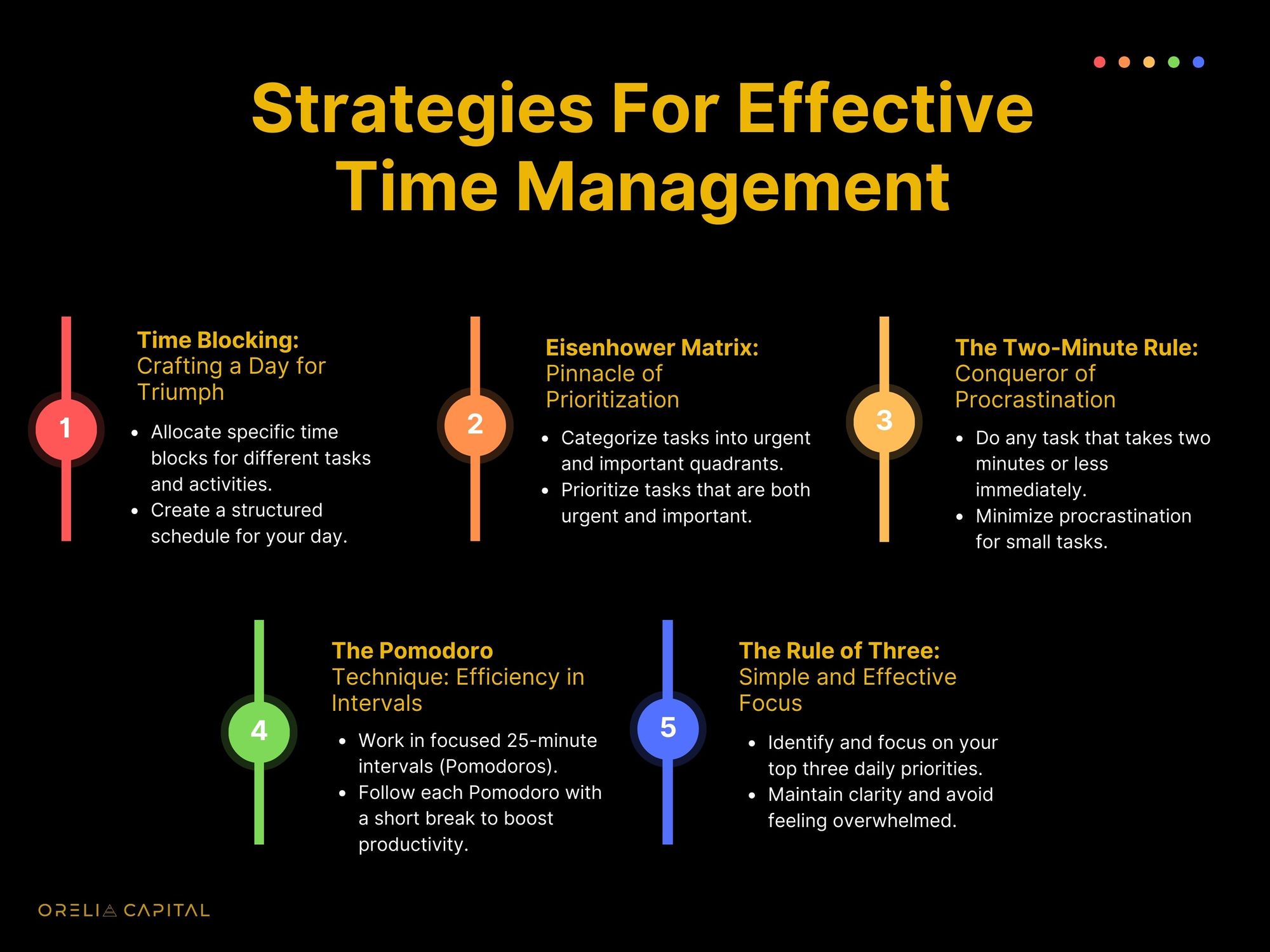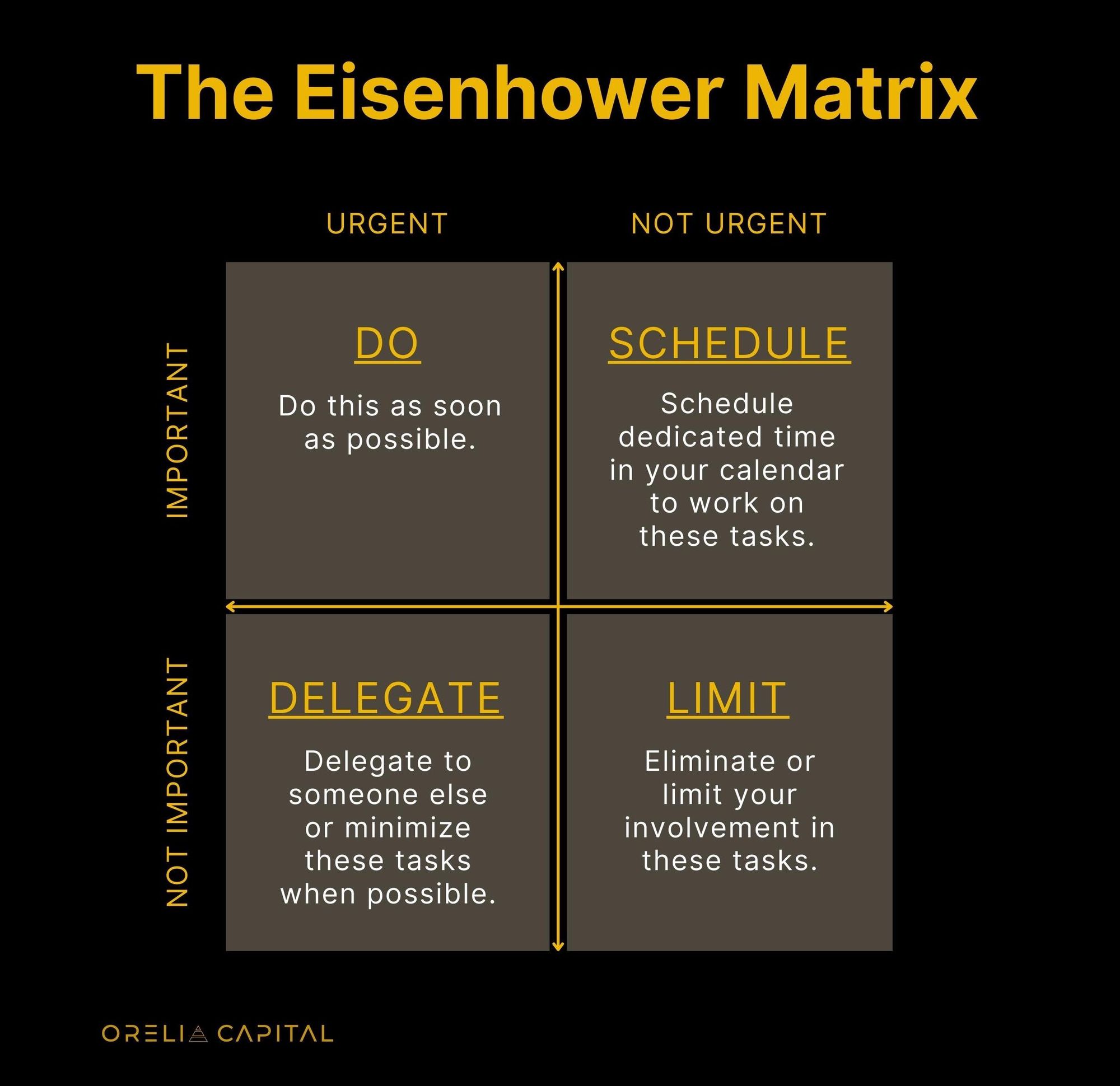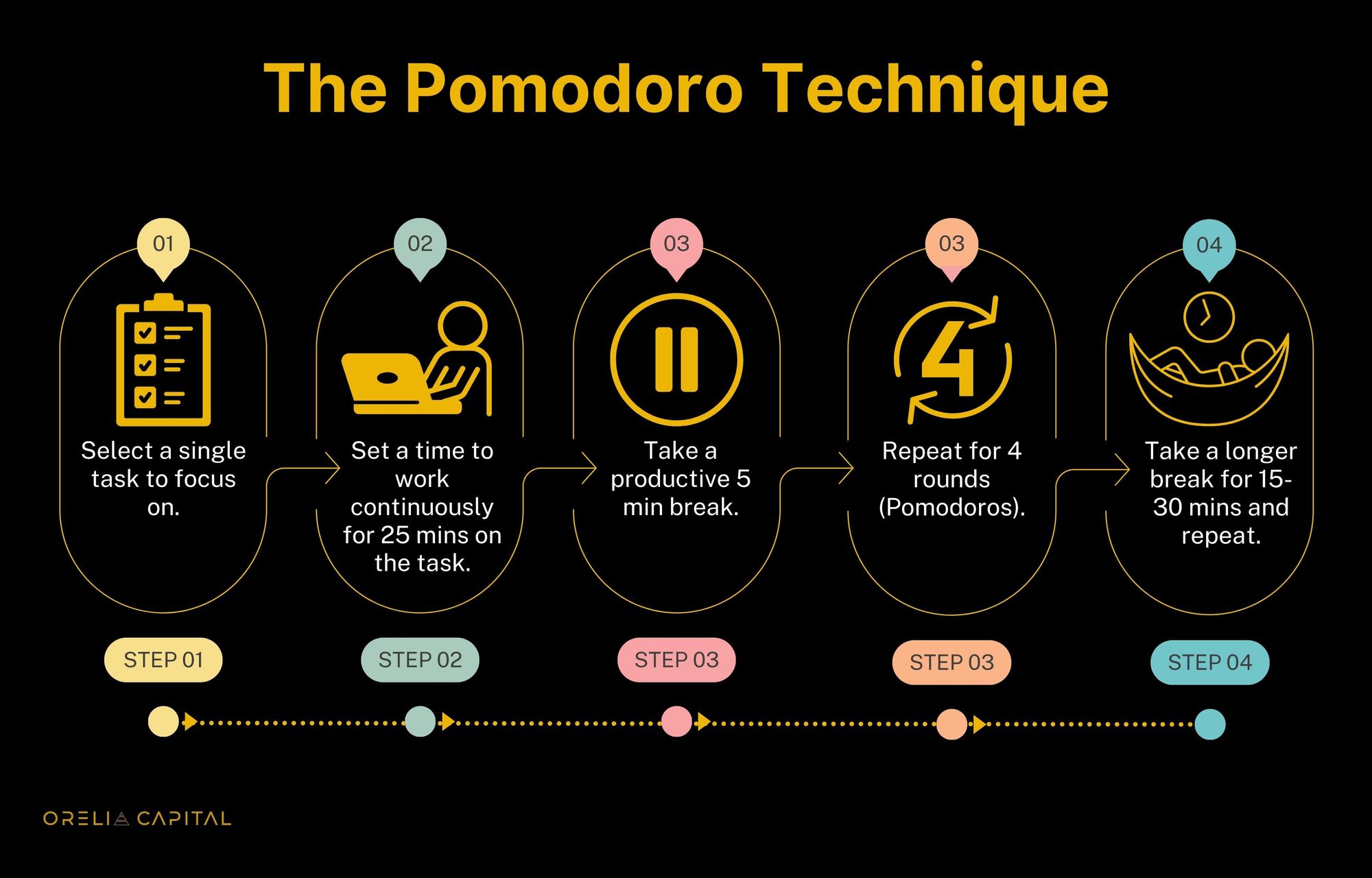Master Time Management: Reach Financial and Personal Prosperity

In our fast-paced modern lives, effective time management is a critical compass guiding us through the daily myriad of choices. In this week's financial and mindset newsletter, we invite you to embark on a journey to uncover the nuances of time management and its profound impact on our financial obligations and personal aspirations. By the end of this edition, you'll be armed with a toolkit of time management strategies that can revolutionize your approach to life's demands. Our ultimate goal is to balance financial responsibilities and personal aspirations harmoniously.
Setting priorities is the cornerstone of effective time management, ensuring tasks with the most impact receive attention. It reduces stress by providing structure and propels goal achievement, making it a fundamental strategy for balanced and efficient financial and personal life management.

Strategies for Exceptional Time Management
Time Blocking: Crafting a Day for Triumph
- Daily Schedule: Plan your day by dividing it into specific time blocks, each dedicated to a particular task or activity.
- Focused Work: Concentrate on one task during each time block, eliminating distractions for maximum productivity.
- Balanced Allocation: Allocate time blocks to financial tasks and personal goals, ensuring a well-rounded schedule.
- Flexibility: Allow flexibility within time blocks, accommodating early task completion or brief breaks.
Eisenhower Matrix: Pinnacle of Prioritisation

- Quadrant I - Urgent and Important (Do First): Tasks in this quadrant are urgent and vital. These require immediate attention, such as paying bills, addressing emergencies, or meeting critical deadlines.
- Quadrant II - Not Urgent but Important (Schedule): This quadrant includes tasks that are important but not immediately pressing, like long-term financial planning, self-improvement, and relationship-building.
- Quadrant III - Urgent but Not Important (Delegate or Minimize): Tasks in this quadrant are urgent but don't significantly contribute to your long-term goals. They might include distractions, interruptions, or minor administrative duties.
- Quadrant IV - Not Urgent and Not Important (Eliminate): This quadrant contains tasks that neither demand immediate attention nor contribute to your overall goals. Examples include time-wasting activities or unnecessary distractions.
The Two-Minute Rule: Conqueror of Procrastination
- Instant Action: The Two-Minute Rule advocates that any task that can be completed in two minutes or less should be tackled immediately.
- Eliminates Procrastination: By swiftly addressing quick, manageable tasks, the rule eliminates the tendency to delay or put off small responsibilities.
- Maintains Momentum: It helps keep a steady workflow and prevents the accumulation of minor tasks, which can become overwhelming when postponed.
- Clears Mental Clutter: This rule reduces mental clutter by addressing small, nagging tasks promptly, allowing for enhanced focus on more significant undertakings.
The Pomodoro Technique: Efficiency in Intervals

- Structured Work and Rest: The Pomodoro Technique is a time management approach that advocates working in short, structured intervals of 25 minutes, known as Pomodoros. After each Pomodoro, take a 5-minute break.
- Optimal Concentration: The 25-minute intervals are designed to maximize concentration by breaking tasks into manageable segments.
- Adaptability: Readers can customize the duration of Pomodoros to suit their needs, perhaps opting for shorter or longer intervals based on their work preferences and the nature of the task.
- Scheduled Breaks: The method includes 5-minute breaks after each Pomodoro and a more extended break after four Pomodoros (approximately 15-30 minutes). These breaks provide a chance to recharge and refocus.
The Rule of Three: Simple and Effective Focus
- Simplicity for Clarity: The Rule of Three distils the daily priorities into three key tasks. This simplicity eliminates the clutter and clarifies what needs immediate attention.
- Sharper Focus: By zeroing in on only three priorities, readers can concentrate their mental energy and efforts, fostering an unwavering focus on what truly matters.
- Overwhelm Prevention: With three tasks to tackle, the Rule of Three safeguards against feeling overwhelmed.
- Daily Sense of Accomplishment: Completing three significant tasks translates to concrete progress and boosts motivation.
Balancing Financial Responsibilities with Personal Life
Upholding a harmonious equilibrium between financial obligations and personal life is paramount for enduring well-being. To strike this balance:
- Long-term Planning: Crafting a visual roadmap delineating how financial and personal goals will be harmonized over time can be profoundly advantageous. This roadmap illuminates how readers can methodically allocate their time and energy to various endeavours over weeks, months, or even years.
- Stress Mitigation: Visualizing stress levels throughout an average week is enlightening. Readers can subsequently earmark time for relaxation, self-care, and activities that facilitate stress reduction by identifying periods of elevated stress. A weekly stress chart is an excellent medium for visually depicting this approach, enabling readers to spot patterns and make informed adjustments.
By delivering an in-depth exploration of each topic, supported by relevant visual aids, this article equips readers with a comprehensive understanding of time management and the proper strategies to balance financial responsibilities with personal life.

We hope you enjoyed this edition of our newsletter. If you found it helpful, please consider sharing it with others who might benefit from this information.
At Orelia Capital, we believe that feedback is a gift. Your feedback can help us improve our content and provide more value to our readers.





